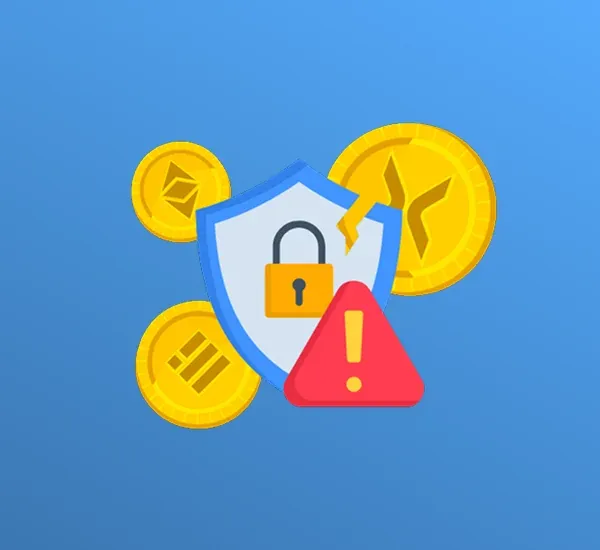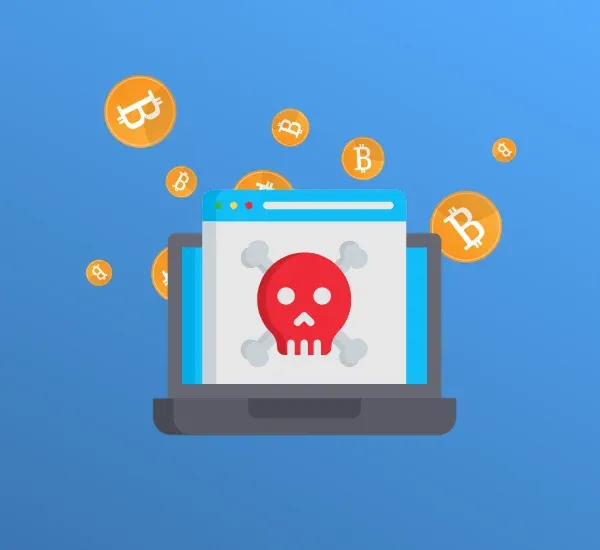Crypto Thefts in 2025: What Beginners Need to Know to Stay Safe?
For Beginners

Intro: Security Isn’t Optional Anymore
Crypto in 2025 feels smooth on the surface. Wallets open fast. Interfaces look clean. Everything you need — from staking to bridging — fits into one browser tab. The experience doesn’t push back. That’s where most people lower their guard.
Attackers know exactly how the flow works. They don’t need exploits if they can front-run behavior. Airdrop pages show up first in search results. Scam wallets pass app reviews. Bots copy conversation threads and DM with pixel-perfect fake support. Every element in the scam playbook is carefully crafted to appear familiar — not suspicious, just slightly too convenient.
For beginners, the threats blend into the interface. A connect button opens a signature. A claim form resembles the one that was previously successful. No broken layout, no warning from the wallet. Just another prompt in a system that has already trained users to move fast.
And the entry points are everywhere. Telegram links with custom previews. Fake «CoinGecko» pages seeded into Twitter threads. Frontends are injected into real sites through ad scripts.
What’s changed isn’t the presence of risk — it’s the way it travels. Scams in 2025 are packaged like product updates. Polished. Familiar. Easy to misread. And for someone exploring their first few «dApps» or token tools, the line between real and fake often disappears in a single click.
Security in this market isn’t built on fear. It holds where users know what to ignore — and what never to click first.

The 2025 Theft Landscape: Beyond Just Hacks
In 2025, most losses in crypto will no longer start with protocol failures. The targets shifted — not toward infrastructure, but toward people. The tools got simpler. The traps got quieter. And the window to spot danger got a lot shorter.
What used to take a smart contract exploit now runs through clean UX and trusted channels. The most common attack surfaces today look like this:
Primary Vectors of Theft in 2025:
- Compromised frontends
A single script injected into a popular «dApp» can reroute thousands of wallet connections. The fake page loads instantly, mimics the real one, and prompts the same signature flow users expect.
- Ad hijacks and DNS spoofing
Even verified links are no longer safe. Ad platforms and DNS providers have been used to redirect traffic before the page fully loads. Users land on a page that looks right, but the backend routes everything elsewhere.
- Telegram and Discord drainer kits
Scammers now run support bots that offer ready-made exploit kits:
- fake airdrop portals;
- approvals for invisible drainers;
- signature spoofers that trick wallet prompts.
These kits spread fast and require no coding — just distribution.
- Scam wallets in app stores
Fake versions of MetaMask, Phantom, Rabby, and other wallets now pass moderation. Once installed, they prompt for seed phrases, simulate import success, and silently export private keys.
- Deepfake video campaigns
AI-generated clips now feature public figures — founders, influencers, devs — delivering fake calls to action:
- «Mint now»;
- «Whitelist closing»;
- «Claim bonus»;
The voices match. The delivery is fluid. The link is poisoned.
- Address poisoning attacks
Bots monitor public wallet activity, send lookalike tokens or small amounts, and hope users copy the wrong address back from their history. One copy-paste is enough to reroute a full transfer.
These threats don’t require breakthroughs. They operate on timing and familiarity. Most look exactly like the last successful transaction a user made — and that’s what keeps them effective.
Social Engineering: The Easiest Way to Lose Everything
In 2025, scams don’t come with warnings. They come with good grammar, familiar branding, and the right message at the wrong time.
Telegram groups, Discord chats, DMs on X — all of them serve as entry points. Ask a simple question, and you might get ten answers within seconds. Some will come from bots running scripts. Others from profiles built to look like admins. Every line sounds like help. That’s how it works.
Attackers don’t break systems. They hijack conversations. A message about wallet issues. A link to «check eligibility». A fake support form that asks for a wallet address. Once the flow starts, the rest unfolds on its own. The scammer doesn’t need to convince — they just need you to move fast and skip the check.
These scripts target common habits. Users are trained to connect wallets, sign transactions, and follow mod instructions. The scam mirrors that behavior down to the color palette and font size. If the interface looks familiar, the doubt fades quickly.
Even outside chat apps, the same tactics scale. Scam emails now spoof real team domains. App notifications push fake airdrop alerts. Browser extensions mimic trusted plugins and reroute approvals without showing anything new. In every case, the attack hides in routine.

Fake Wallets, Drainers, and Approvals: Where Users Slip First
In 2025, some of the most effective scams will never touch the blockchain. They start before the first transaction is signed — inside app stores, search results, and pop-ups that look like part of the interface.
Fake wallets are at the center of it. Stores now list dozens of clones mimicking popular names like MetaMask, Phantom, Rabby, and Trust. These apps:
- use identical logos and onboarding flows;
- copy button animations and interface delays;
- simulate import success screens to build trust.
Once a seed phrase is entered, the data goes straight to remote servers. The drain usually happens within minutes — often before the user even finishes setup.
Browser-based attacks follow the same logic. A typo in a URL or a misclick on a promoted link can lead to:
- download pages with the correct branding but the wrong file;
- extensions that behave like real wallets until they request a «security sync»;
- drainers that activate only after a seemingly harmless connect prompt.
Even without malware, approvals alone can trigger full loss. Drainer contracts don’t need your keys — just one signature.
These signatures often hide inside:
- fake staking or farming dashboards;
- «Claim airdrop» pages hosted on near-identical domains;
- launchpads that mirror actual projects, down to token lists and swap mechanics.
Everything looks functional. The site loads, the interface responds, and gas fees show normally. But the contract behind the “approve” button is designed to move everything out.
Victims usually don’t catch it in real time. The page works. Nothing lags. The transaction goes through as expected. That smoothness is the scam’s best asset.
The wallets that get drained in 2025 don’t get caught by surprise links. They get caught by flow — interfaces that match expectations perfectly until the moment funds vanish.
What Platforms and Chains Are Getting Targeted Most
In 2025, scam activity concentrates where new wallets connect fast, and user flow is easy to predict. Some chains face more pressure than others because attackers know exactly where habits form quickly and repeat often.
Here’s where the most targeting happens:
- Solana — High activity, low fees, and fast wallets make it easy to hide fake minting sites and malicious token launches in plain sight;
- Telegram bots — Tap-to-sign interfaces and embedded swap tools give scammers a direct path to wallet permissions without requiring a browser or visible contract;
- Ethereum — Older approvals from past DeFi activity remain active in many wallets. Attackers scan for these and trigger them through phishing links or cloned frontends;
- layer 2 roll-ups (Base, Blast, Scroll) — Airdrop events bring in large waves of users, and fake claim portals often outrank official links in search and social traffic;
- cross-chain bridges — Imitation bridge interfaces simulate real transaction flows, but reroute assets to attacker-controlled destinations during confirmation.
How Wallet Hygiene Works
Good wallet hygiene keeps funds intact when everything around moves too quickly to second-guess. It’s not a checklist to tick off once. It’s the kind of setup that runs quietly in the background — every time, without exception.
Start with the layout. One wallet handles farms. Another holds long-term assets. A third — fully empty — is used to open new links or test «dApps». The separation matters. When funds sit behind clean boundaries, no single click can break the whole stack.
Hardware wallets reduce exposure from the start. They require physical confirmation, which adds friction at exactly the right moment — just before a dangerous signature goes through. That pause changes outcomes more often than any browser pop-up.
Token approvals need regular audits. Tools like «Revoke.cash» or «Debank» show active permissions from past sessions. Many drainer contracts work off old access left untouched for months. Even «dApps» that once felt safe shouldn’t stay whitelisted without purpose.
Connect actions are never neutral. Just visiting a site with wallet integration can leak token lists and metadata. That’s why burner wallets exist. No history, no balances, no risk of overlap. Every new link starts there — even if it looks familiar.
Backups deserve quiet planning. A written seed phrase works. A photo saved to cloud storage does not. The more devices it touches, the more chances it leaves open. Local, offline, unexposed — and ideally, somewhere you won’t try to «clean up» during a file purge.
Wallet hygiene works because the same flow happens every time — clear roles, clean approvals, and one second to pause before clicking.

The Tools That Help (and the Ones That Don’t)
No tool guarantees safety — but the right ones catch risks early, reduce blind spots, and add friction in the places where mistakes tend to happen.
Here’s what works in 2025:
- «Revoke.cash» and «Debank»
Essential for checking token permissions and revoking old approvals. These tools show active contract access, not just balances — and that’s where most drainer contracts live. Fast to use, easy to forget, but critical after interacting with any new «dApp».
- «ScamSniffer»
Monitors phishing domains and drainer contracts in near real-time. If a fake site starts circulating, this tool usually flags it within hours. Its early alerts help keep users off compromised frontends before damage is done.
- «Wallet Guard», «Blowfish», and similar browser extensions;
These tools scan transactions before they’re signed. They flag unlimited approvals, hidden contract calls, and unexpected signatures. Most users don’t read transaction data — this layer reads it for them.
- explorer tools (like Etherscan or Solscan approval trackers);
Not branded as security tools, but still useful. They let users manually inspect contract histories and token movements when something looks off. Especially relevant for catching suspicious drains over time.
At the same time, several tools give a false sense of protection:
- Generic anti-phishing browser add-ons;
Often marketed as wallet protection, but they don’t audit contracts or block approvals. Some slow down phishing attempts, but few intercept actual drainers. If alerts show up after funds move — the protection came too late.
- Telegram «scan bots»;
Posing as audit tools, these bots often log addresses for future targeting. They respond quickly and appear technical — but the interface masks their real function: building lead lists for scam campaigns.
Security tools don’t need to be complex. The ones that matter show clear signals before a transaction goes live. The rest either warn too late — or gather data under the banner of protection.
Why Safety Always Starts Small
Scams in 2025 rarely look like threats. Most of them copy the exact steps users follow every day — same design, same buttons, same flows. That’s why they work. A clean interface and a familiar process are usually all it takes.
Security holds when every step follows a routine. Transactions go through only after checking the URL. Wallets for testing stay empty. Storage wallets never connect to new sites. Airdrops don’t get claimed without verifying the source. These aren’t high-effort moves — they’re just consistent.
Attackers build habits. They rely on moments when users skip the steps they usually follow. When approvals aren’t reviewed. When a site gets opened out of curiosity. When the process breaks down for speed.
The setups that last long-term aren’t locked behind advanced tools or expensive devices. They rely on clear separation, predictable flow, and zero shortcuts. Every transaction goes through the same checks — even when it looks safe. Scams adjust quickly. Habits need to be faster.


